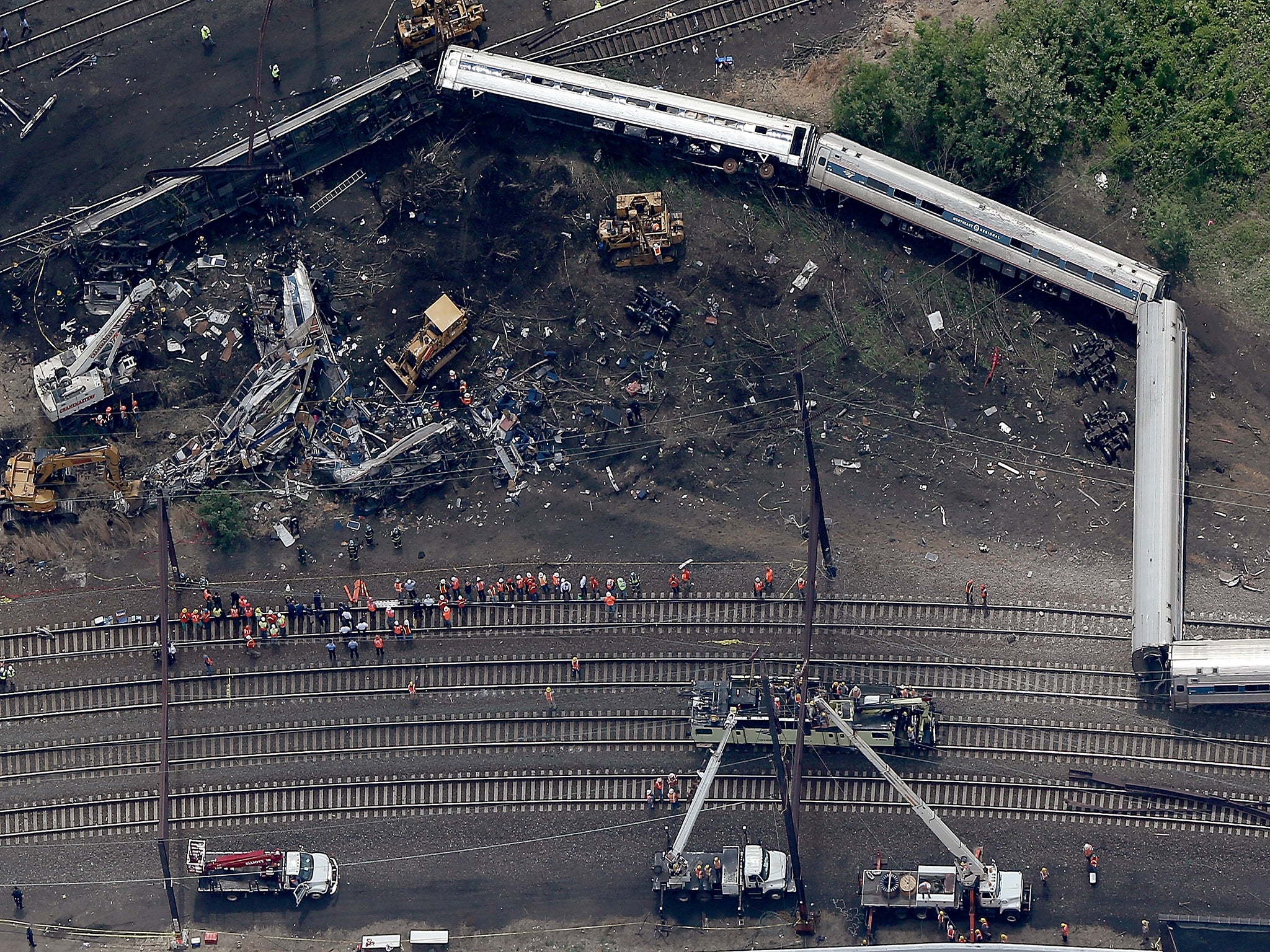Amtrak crash: Current signal system could have been modified to automatically reduce train speed
Report says new technology may not have been necessary to prevent accident

The current signal system installed on the stretch of track where an Amtrak train crashed this week – killing eight people – could have been modified to automatically reduce the train’s speed, according to a report from the Wall Street Journal.
Much has been made about Amtrak not having installed an advanced system, called positive train control, that experts say would have prevented the crash, but a tweak to the existing signal system also would have prevented the train from exceeding the speed limit. Speed appears to have caused the crash
The National Transportation Safety Board, which is investigating the accident, said that the train was travelling at 106 mph just before it derailed while rounding a curve that had a speed limit of 50 mph. Investigators have not determined why the train was moving so fast.
The train was travelling between Washington DC and New York when it went off the rails in Philadelphia on Tuesday night. Eight people have been confirmed dead and more than 200 were injured. Investigators believe all people have been accounted for.
A technology, called automatic train control, has been used for years by rail companies to slow trains and keep safe distances between them. Amtrak uses the technology on the southbound track of the Northeast Corridor, but had not converted the signals on the northbound track, where the crash occurred.
In pictures: Amtrak Philadelphia train crash
Show all 15Automatic train control is capable of sending speed information to a train and equipment inside the train can sense when a train is exceeding the speed limit and set off alarms. The system can also engage emergency brakes if an engineer does not respond.
Amtrak installed automatic train control on several curves on its track after a 1990 crash in Boston, the Journal reported. But it was only installed on curves where the speed limit immediately before the curve would have caused the train to overturn if speed was not reduced. The curve where the accident happened was not one of those curves.
Follow @PaytonGuion on Twitter.
Subscribe to Independent Premium to bookmark this article
Want to bookmark your favourite articles and stories to read or reference later? Start your Independent Premium subscription today.

Join our commenting forum
Join thought-provoking conversations, follow other Independent readers and see their replies